AR Indoor Navigation
Enhancing the Patient Experience in AR:
Indoor Navigational Support Assistance in Hospital
Individual Research
What if finding your way in a hospital was as simple and calming as following arrows in the air?
PROBLEM STATEMENT
How can hospitals better support patients—especially those who are stressed, elderly, unfamiliar with the space, or cognitively overwhelmed—in finding their way with confidence?
Traditional hospital wayfinding tools such as paper maps and static signage often fail to meet the needs of diverse patients, who may face emotional stress, cognitive load, or spatial disorientation. This project explores the use of AR to provide personalized, real-time indoor navigation assistance, aiming to reduce confusion and anxiety. While the initial context is hospital environments, the approach holds potential for broader applications in other complex public spaces such as airports, museums, and university campuses.
Have you ever gotten lost in a hospital and felt anxious or rushed for an appointment?
QUESTIONAIRE AND FINDINGS

📍 76% of respondents reported that wayfinding was difficult during their first hospital visit.
📍 18% said that poor wayfinding negatively affected their emotional state.
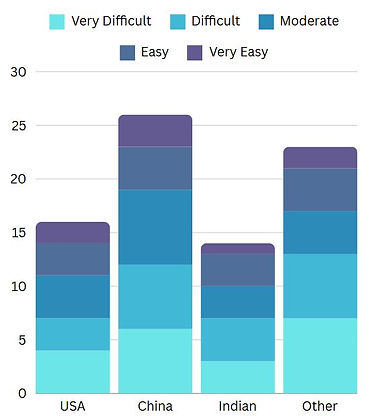

CURRENT CHALLENGES
Hospitals are large, complex, and constantly changing environments. Patients—especially those who are stressed, elderly, or unfamiliar with the space—often struggle to navigate them. This challenge is rooted in four key issues: spatial complexity of hospital layouts, the limitations of traditional signage and maps, high-dynamic indoor conditions, and the lack of real-time indoor navigation technologies. These factors frequently lead to confusion, anxiety, delayed appointments, and increased dependence on staff for directions.

WHY USE AR FOR INDOOR WAYFINDING ?


AR Indoor Navigation: Technically Feasible and Scalable, Affordable
SYSTEM OVERVIEW
SLAM helps the system understand where the user is and where they’re going—enabling real-time positioning and path guidance.
VPS ensures the AR arrows stay in the right place, even if users restart the session or shift their camera.



INTERACTION DEMO
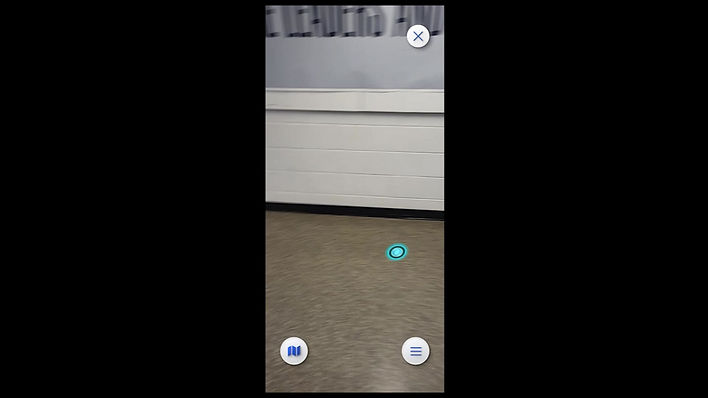
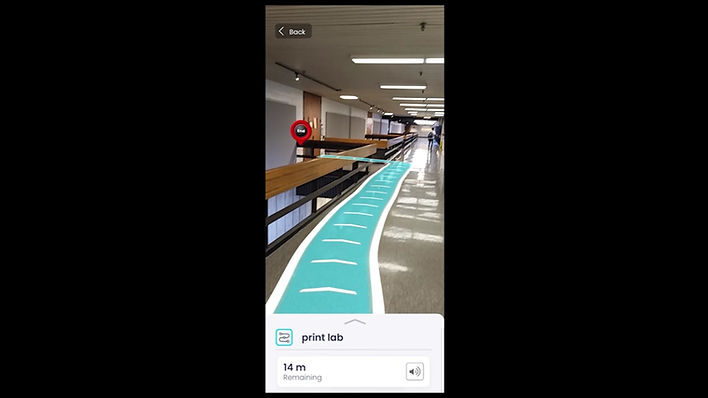
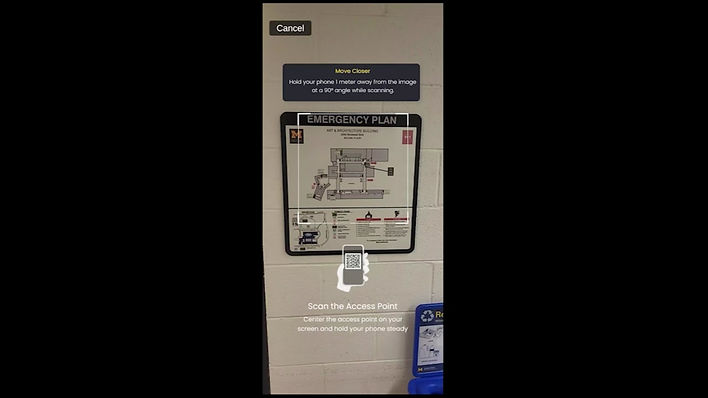
QR CODE or Image Initialization
Inclusive Design (Hard for Elderly, ESL, Cognitively Impaired)
Route Selection
"Where am I going? "Inclusive Design (Hard for Elderly, ESL, Cognitively Impaired)
Along the Route
"Where am I going? "
How do I get there?”
“Am I on the right path?”

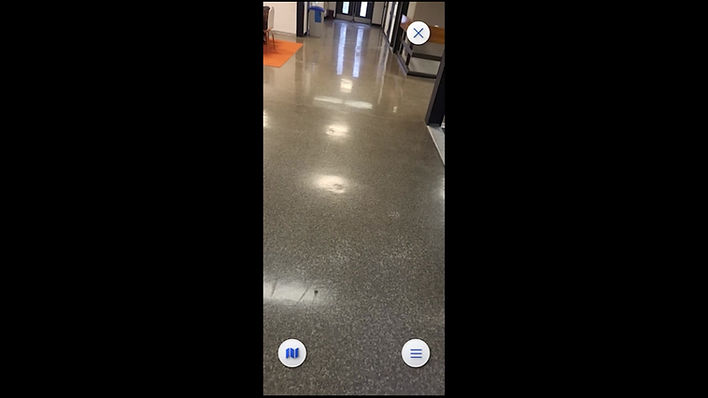
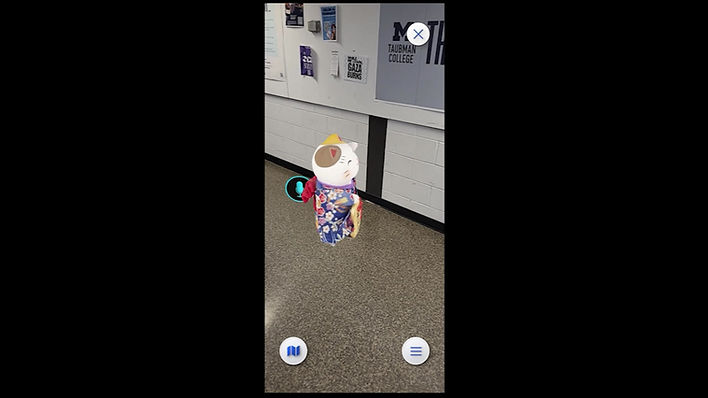
Real-time 2D Map
Multimodal Support
Distance Indicator
Where am I
Where am I going
Real time Feedback
Inclusive Design (Hard for Elderly, ESL, Cognitively Impaired)
Where am I
Did I arrive?
RESEARCH GAPS AND OBJECTIVES
What Prior Research Lacks
1.Limited use of AR in hospital settings
Most AR studies focus on tourism or education—not healthcare.(Ref: Doukianou et al., 2020; Silva & Teixeira, 2020)
2. Lack of cognitive/emotional focus
Prior research emphasizes signage/maps, not user stress or cognition.
3. Underexplored user diversity
Few studies address needs of elderly, ESL users, or neurodiverse populations
4. Few AR-Based Indoor Wayfinding Studies
Very few empirical studies have explored AR as a solution for hospital wayfinding.(Gap identified in Morag & Pintelon, 2021; Zhou et al., 2022)

METHODOLOGY

VS
AR GROUP
PAPER GROUP
Participants: 32 (19F, 13M), age 19–30 (M=28.4)
Location: University of Michigan Hospital – 2F Taubman Center /Pathology Center
IRB Protocol: HUM00271415
Between-subjects design: AR (n=16) vs. Paper map (n=16)
Total navigation distance: ~560m
Tasks: Navigate to Pathology Center and return via alternate route
Each participant was asked to navigate to the Pathology Center and return via an alternate route, covering a total distance of ~560 meters. We compared the two groups in terms of navigation time, cognitive load, anxiety, and user satisfaction.

1.AR outperformed paper maps in:
✅ Task completion time✅ Navigation accuracy✅ Cognitive workload (NASA-TLX)✅ Anxiety reduction (STAI)
94% preferred AR for future hospital visits
2.Trade-Off: Efficiency vs. Learning
📉 AR users relied on visual cues
📈 Paper map users retained better spatial memory
✔️ Design Tip: Add landmark cues and perspective switching (AR + map toggle)
3. Design for Neurodiverse Users
🡆 Support varied cognitive abilities and preferences
✔️Simplified visuals and slower pacing for those with ADHD, anxiety)
"Effective AR wayfinding design balances clarity, learning, and inclusivity.
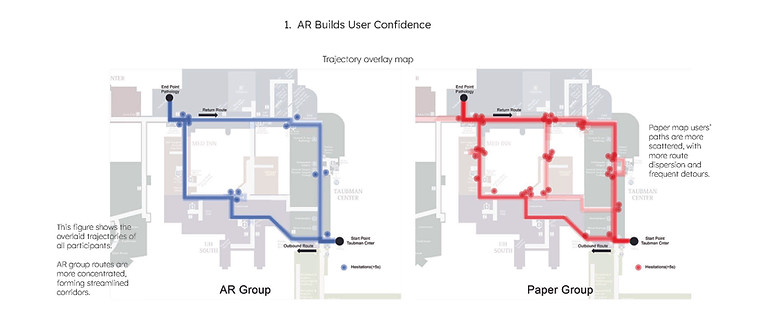
“AR guidance fosters confident navigation behavior—minimizing trial-and-error and promoting smoother hospital journeys.

Faster Completion
AR group completed tasks ~100 seconds faster than map group
p < .001 → Statistically significant efficiency gain
Fewer Navigation Errors
AR users made 70% fewer mistakes (wrong turns / hesitation > 5s)
Indicates clearer and more intuitive path cues
Higher Path Accuracy
AR group adhered to optimal routes more precisely
Supported by Gopro Recording and trajectory maps (straighter paths, fewer detours)
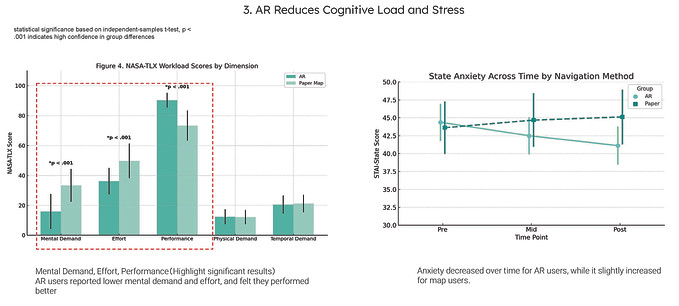
"AR not only eases the mental burden of wayfinding—but also reduces emotional stress for hospital visitors under pressure."

To support both efficiency and spatial learning, AR navigation can incorporate contextual cues—like landmark prompts or faded path trails.
LIMITATIONS


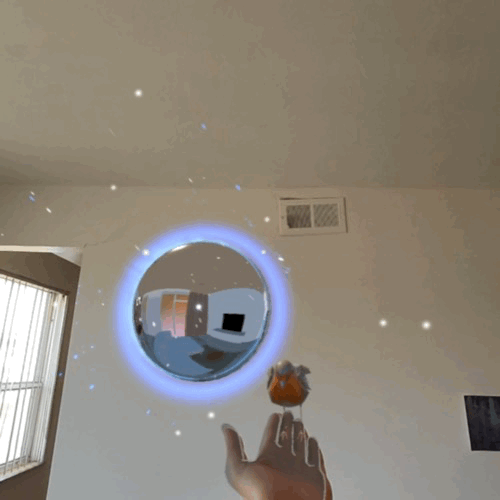




.avif)
